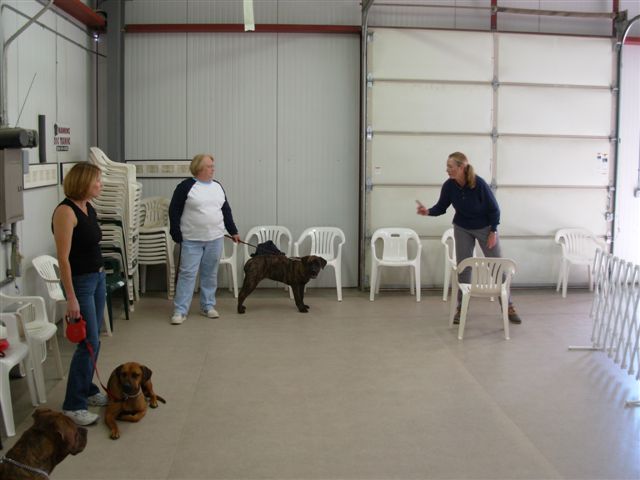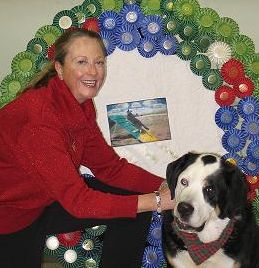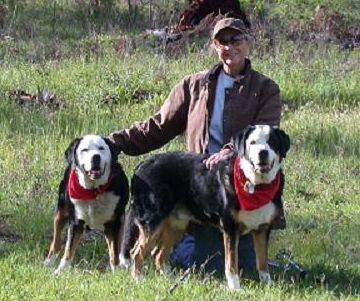Questions about dog behavior and training? Send them to: sandersagility@gmail.com.
Tuesday, October 29, 2013
When leash walks turn chaotic
My friend Andy visited us last summer with his Irish Terrier, Risky. Andy's put a lot of time and effort into training, and the two of them have competed in rally and obedience. But Risky still had a behavior problem that was baffling Andy.
"Every time we walk past a fence that has a barking dog behind it, she just 'loses it,'" he said. "She just becomes this uncontrollable monster, seething at the end of the leash. I can't seem to stop her and show her that she should relax."
So we took a walk up our dirt road and got to the neighbor's house, where a border collie mix ran down his driveway to size us up. His tail was erect and he was growling, but he stopped when he got to the end of his driveway.
Risky, on the other hand, predictably started a barking and pulling frenzy, despite Andy's efforts to subdue her. He, too, had stopped to try to reel her in and make her sit calmly in the other dog's presence. But the more she barked, the more frantic he became in his commands, which were like kerosene on a fire.
And this was the crux of the problem!
"Andy," I yelled, though he couldn't hear me over Risky's barking. "Keep moving; keep walking. Walk her right past that dog and keep going."
Finally I stepped in and took Risky's leash so I could demonstrate. Keeping the leash fairly short, but not tight, I turned us around 180 degrees and strode briskly and confidently back past the dog at the fence, without even glancing at the border collie. Risky had no choice but to keep going with me. I turned around and dd it again. She was calmer because I was calm. We did it once more, and this time Risky didn't look at the dog either, and she didn't bark.
I had diffused her anxiety by telegraphing to her that I (her leader) was not concerned about the strange dog, so she need not be either. In fact, I had "dissed" the other dog by not even acknowledging him, and that was the only information Risky needed to determine her own reaction.
Whereas Andy had stopped and knelt down and tried to physically calm his dog in the presence of the stimulus, I had chosen to remain upright (showing confidence) and ignore it. With Andy, Risky had picked up on his anxiety, which had escalated the problem. With me, Risky picked up on a calm assertion, which meant she could relax because she knew I didn't think the situation was worth a reaction. I also used motion (I kept walking) instead of stopping. When your dog is moving, he has less time to "stew" about things.
Mind you, I had to pull a bit the first time to get Risky to go smoothly with me past the border collie. But I didn't beg, yell, reason, comfort, or jerk the leash. I just kept walking.
As a calming agent for your dog's reactivity, your own leader-like demeanor is probably better than any gimmicky training device or drug you can buy. Remember...if the leader's not worried about a situation, no one else has to worry either.
(Note: this principle is only applicable to "true" leaders, not necessarily those we just elect to public offices!)
Subscribe to:
Post Comments (Atom)



















No comments:
Post a Comment